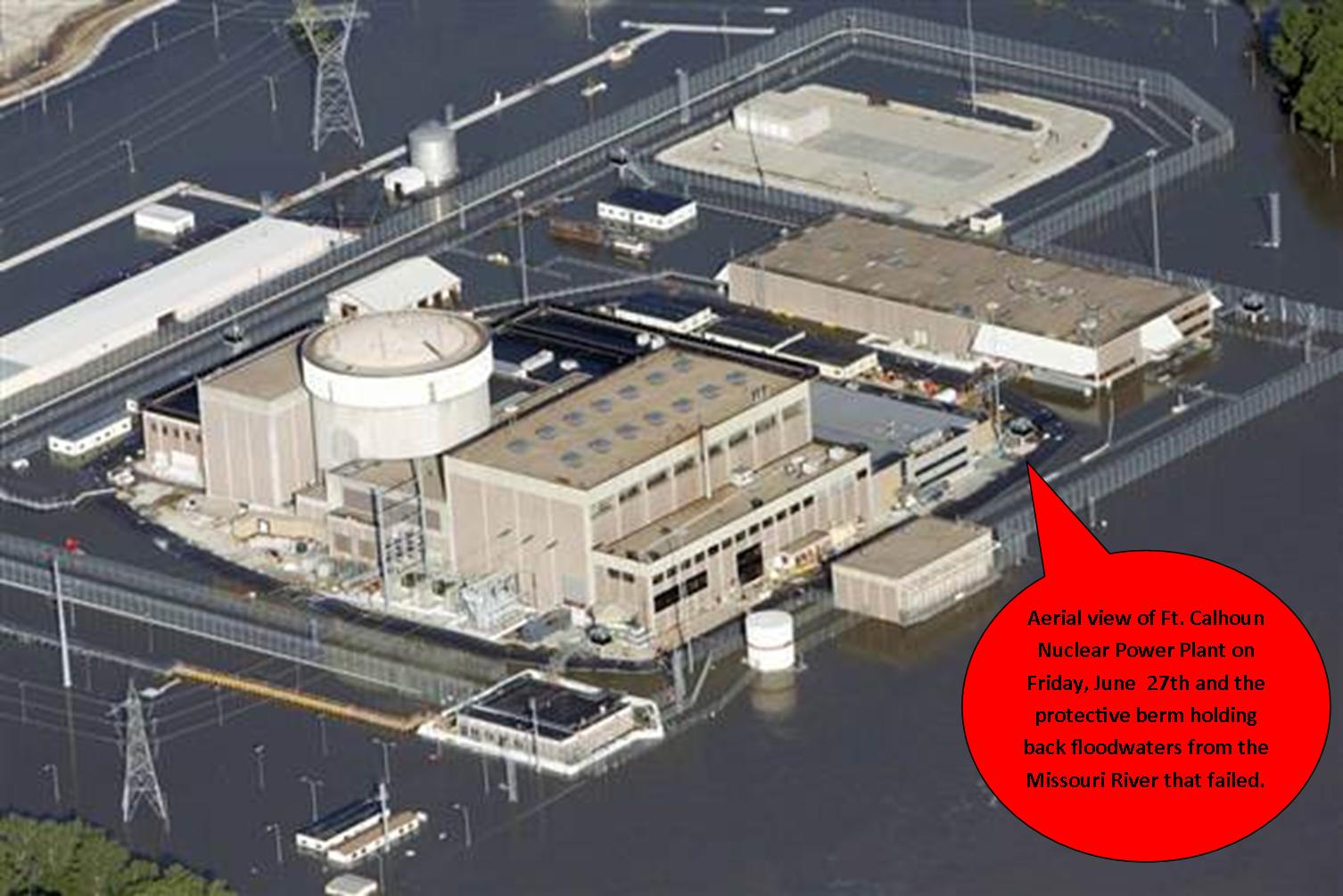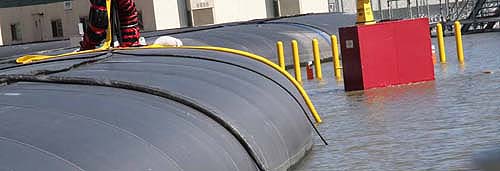What The Fukushima Is Going On In Omaha?
The U.S. Nuclear Regulatory Commission (NRC) is monitoring events at the Fort Calhoun nuclear power plant after a protective berm holding back floodwaters from the Missouri River collapsed early today.
The plant, located about 19 miles north of Omaha, Nebraska, is operated by Omaha Public Power District. NRC has been monitoring this plant since June 6th because of flooding along the river.
The situation at this plant, in spite of the reassurances of the operators and the NRC, has been a bit nerve wracking following on the heels of the Japanese disaster, especially for those of us who see the NRC more as an industry cheerleader than a safety agency.
On June 9th, a fire in an electrical switch room briefly knocked out cooling for a pool holding spent nuclear fuel, and just last October, the plant was cited because they failed to maintain procedures for combating a major flood, earning them a “yellow” safety violation. Since that time, the plant has put measures in place, but there is still concern about how effective these measures will be in the face of this record breaking flood event, especially in light of the most recent events.

A 2,000 foot-long, 8-foot-tall by 16-foot-wide, water-filled temporary berm was put in place to provide supplemental flood protection to the plant, but it collapsed about 1:25 a.m. today allowing floodwaters to surround the auxiliary and containment buildings. The operators and NRC are telling the public that the plant is protected by design to a floodwater level of 1014 mean sea level and that while the Missouri River is currently at 1006.3 feet, river levels are not expected to exceed 1008 feet.
Worst-case scenario plans are also in place if floodwaters should reach 1,014 feet, breech the levee and prohibit further use of emergency generators. In that circumstance, plant officials plan to tap into power lines running above the facility and/or utilize secondary backup generators housed at 1,036 feet.
Before floodwaters could flow into the cooling pool the river would need to rise to an incredibly unprecedented 1,038.5 feet, which we assume would also knock out those secondary backup generators housed at 1,036 feet. At that point, “what the Fukushima”, all bets are off.

The collapse of the berm also allowed floodwaters to surround the main electrical transformers, forcing the shutdown of electrical power. Operators transferred power from offsite sources routed through the main electrical transformers to the emergency diesel generators. Twelve hours later they were able to reconnect to offsite power.
Oh, and did we mention that there were tornados in the area over the weekend? Just a little added excitement.
Media coverage should provide updates for this situation and we’ll blog more about it has we receive information.